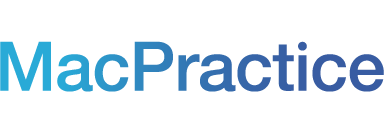
Even though clear communication is more critical than ever, for many practices, the challenges of communicating with patients have increased in response to the Coronavirus (COVID-19) epidemic. Most practices have updated their front desk and waiting room policies to reflect the new Center for Disease Control (CDC) recommendations on clinic preparedness. Many practices have had to update their strategy for controlling community spread multiple times over the last month. Here are four top patient communication issues and some ideas on how your practice can best manage in this current crisis.
We need a strategy to address continually updated policies about our waiting room, checking in, and how to arrive for your appointment.
A revolving door of policies is commonplace as we learn more about the epidemic. Communication needs can vary vastly between different patient health communities on any given day. While one practice may decide to cancel non-essential appointments, another may devise a system of asking patients to wait in the parking lot to be "checked in" from their cars.
Each of these strategies requires clear and consistent communication with patients with a turn around time that eliminates regular postal mail. While some practices may find themselves calling each patient before their appointment to update the patient on the practice's current policies, others are finding that their staff does not have the time.
In these situations, online communication tools like Patient Portals are invaluable resources for communication regarding public health, practice policies, and how patients can best prepare for their appointments before they arrive at your practice. Updated policies can be sent to your patients en masse and with a timestamp so that the latest update is clear, making your frequently updating systems easier to follow.
With the use of Patient Portal tools, patients also can create appointments, fill out forms, verify current contact information, and review their records online to minimize the time a patient must spend in your practice's waiting room. When patients can fill out most of the necessary information online, your front desk staff have fewer phone calls and forms to juggle and no clipboard to sanitize after each use.
We need a strategy to manage an influx of appointments and frequent rescheduling.
More patients than ever may wish to see their regular provider, stretching resources very thin. Now more than ever, active time and exam room management is key to quality care. When patients can't get through to your office to cancel, you may see more no-shows. With Patient Portal, a patient can cancel and reschedule an appointment online so that there is less need to ditch the appointment, and less time spent in the waiting room making an appointment with the front desk. Patients can create and adjust appointments with ease, and on their own time, phone lines free up, and your staff can arrange less contact between visiting patients with shorter overall waiting times.
If you choose to allow it, new patients can also request available time slots to be seen by a provider in your practice through Online Scheduling on the Patient Portal. Any intake paperwork and usual first appointment questionnaires can be filled out at that time rather than in your office. Patients can also link their accounts through the portal to coordinate appointment times, such as parents creating a sequential time for their children's appointments and keeping visits from each family down to a minimum.
We need to have the option of back and forth communications with patients online, but it needs to be secure and HIPAA compliant.
With so many urgent communications depending on their practice's immediate response, many offices need to channel more typical, less time-sensitive questions into a manageable system. It could be as simple as a notification of a new phone number or a more in-depth question about whether or not a pain reliever can be taken with current medication. Patients who have questions, concerns, or want to update personal information may prefer to ask online or to message your practice with a secure, HIPAA compliant messaging. With Secure Messaging systems, messages are delivered directly into your electronic health record (EHR) software and associated with the patient's account. Navigation is as easy to use as any other email service but is far more secure and without the legal precariousness. Healthcare needs can be weighted appropriately against contamination risks. Staff and providers can quickly decide if questions or comments from the patient warrant a simple reply via MacPractice, if the response should be given via a phone call, or if the patient needs to come in.
We need a way for patients to spend less time in our waiting room, filling out forms; OR
We need a way for patients to fill out their forms without disinfecting a clipboard each time.
Depending on the reason for a visit, a patient may have to fill out quite a few forms before being seen, such as consent, family history, or even insurance forms or updates. When patient forms are online through a system like the patient portal, a patient can fill out information outside of the practice on their own device, and that information is saved directly into the patient's file. This alleviates staff from having to disinfect a clipboard multiple times each day, enter the data redundantly, then file dozens of paper forms, efficiently changing the focus to better care for your patients in this current epidemic.
